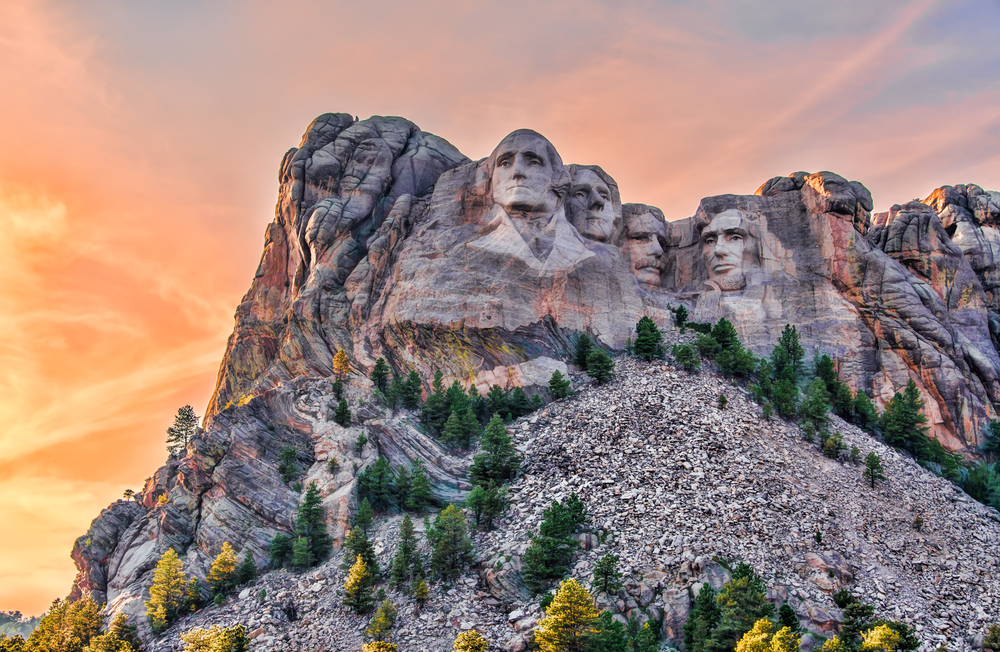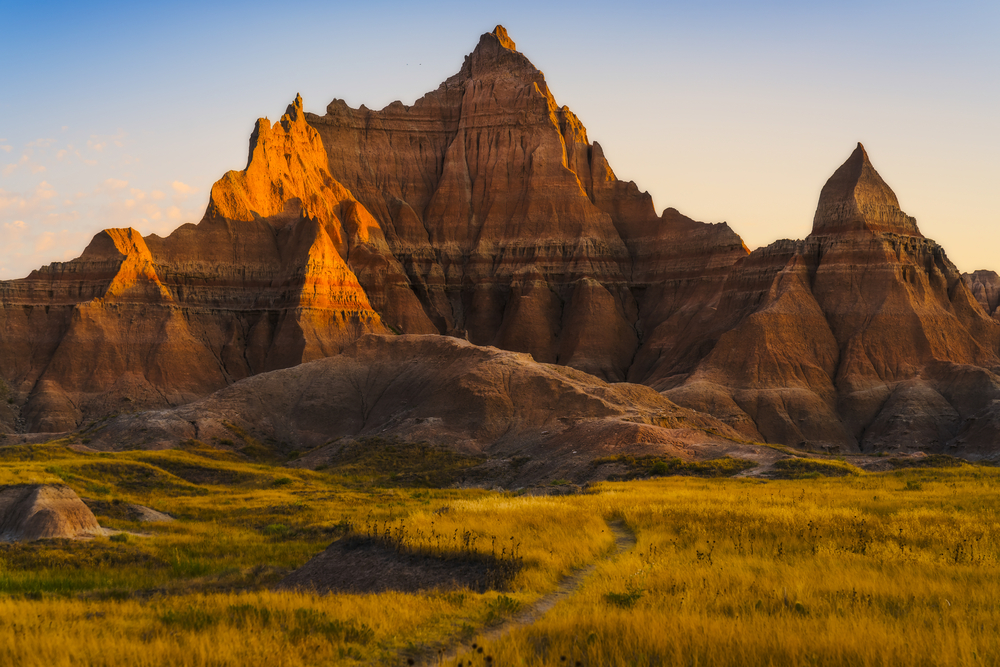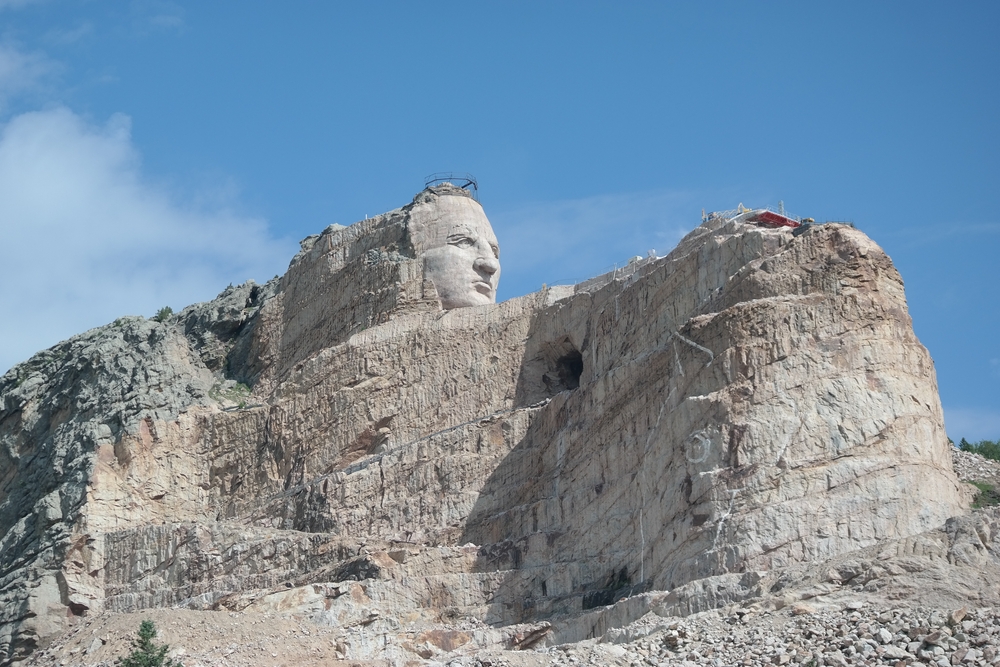The Black Hills of South Dakota are both historic and beautiful. From scenery so majestic it is used in countless schematic productions, to cultures that has been impactful for over 10,000 years.
The Black Hills
The Black Hills is a mountainous region located primarily in South Dakota and extending into Wyoming. Renowned for its diverse landscapes, the Black Hills is characterized by pine-covered hills, granite peaks, and unique geological formations. It holds cultural and historical significance for Native American tribes, including the Lakota Sioux. Notable landmarks in the Black Hills include Mount Rushmore, Crazy Horse Memorial, and Badlands National Park. The region is a popular destination for outdoor activities such as hiking, camping, and exploring its rich natural and cultural heritage.
Mount Rushmore
Mount Rushmore, located in the Black Hills of South Dakota, stands as a testament to human ingenuity and artistic prowess. This iconic monument is renowned for its colossal sculptures of four of America's most revered presidents, carved into the granite face of the mountain. Mount Rushmore has not only become a symbol of American democracy but also a popular tourist destination attracting millions of visitors each year.
History and Origins:
The idea for Mount Rushmore originated with a South Dakota historian named Doane Robinson, who envisioned creating a monument that would draw tourists to the state. In 1924, sculptor Gutzon Borglum was chosen to bring this vision to life. Borglum, along with his son Lincoln, began the monumental task of carving the faces of George Washington, Thomas Jefferson, Theodore Roosevelt, and Abraham Lincoln into the granite mountain.

Construction:
The construction of Mount Rushmore commenced in 1927 and spanned over 14 years. Borglum and his team faced numerous challenges, including the harsh weather conditions of the Black Hills and the unforgiving nature of the granite rock. The sculptors utilized a combination of dynamite and jackhammers to remove large sections of rock, gradually shaping the facial features of the presidents.
The choice of presidents was deliberate, representing different eras and aspects of American history. Washington, the country's first president, symbolizes the birth of the nation; Jefferson, the author of the Declaration of Independence, represents the expansion of the country through the Louisiana Purchase; Lincoln, the president during the Civil War, signifies the preservation of the Union; and Roosevelt, a progressive leader, represents the nation's industrial and economic growth.
Artistic Techniques:
The sculptures at Mount Rushmore are not mere replicas of the presidents' faces; they are carefully designed to capture the spirit and essence of each leader. Borglum employed a combination of artistic techniques, including the use of scale models and detailed measurements, to ensure accuracy and precision in the carving process.
The faces of the presidents stand at a towering height of 60 feet, each with eyes measuring 11 feet wide. The details of their features, such as wrinkles and facial expressions, were meticulously carved to create lifelike representations. Borglum's attention to detail and commitment to perfection is evident in the remarkable craftsmanship that has stood the test of time.
Legacy and Symbolism:
Mount Rushmore was officially dedicated on October 31, 1941. The monument quickly became a symbol of American democracy and national pride. Its images have been widely reproduced in various forms, from postage stamps to currency, solidifying its place in American iconography.
Beyond its aesthetic and symbolic significance, Mount Rushmore has also been a site for public gatherings and ceremonies, including Independence Day celebrations and presidential inaugurations. The Avenue of Flags, featuring flags from all 50 states, adds an extra layer of symbolism, representing the unity and diversity of the nation.
Tourism and Preservation:
Mount Rushmore National Memorial attracts millions of visitors annually, offering a range of activities, including ranger-led programs, hiking trails, and the opportunity to witness the monument's evening lighting ceremony. The site has also undergone restoration efforts to address natural weathering and preserve the integrity of the sculptures.
Badlands National Park
Nestled in southwestern South Dakota, Badlands National Park is a captivating testament to the raw, rugged beauty of nature. Known for its striking geological formations, unique landscapes, and diverse wildlife, the park has become a haven for nature enthusiasts, hikers, and photographers seeking to explore a world unlike any other.
Geological Wonders:
The defining feature of Badlands National Park is its dramatic geological formations, characterized by eroded buttes, deep canyons, and towering spires. These formations, sculpted by wind and water over the course of millions of years, showcase layers of colorful sedimentary rock that tell the story of ancient seas, lush forests, and the evolution of the Earth's surface.

The Badlands' signature striped appearance is the result of sedimentary layers with varying levels of iron oxide, giving rise to hues of red, orange, and yellow. The intricate patterns created by erosion have earned the park its name, evoking a sense of desolation and beauty intertwined. Every trip to the Black Hills should include a stop in the Badlands National Park.
Flora and Fauna:
Despite its harsh and seemingly inhospitable terrain, Badlands National Park supports a surprising variety of plant and animal life. Hardy grasses, wildflowers, and sagebrush dot the landscape, adapting to the arid conditions. The park is also home to bison, bighorn sheep, prairie dogs, and numerous species of birds, making it a haven for wildlife enthusiasts.
One of the most iconic inhabitants of Badlands National Park is the black-footed ferret, one of North America's most endangered mammals. Conservation efforts within the park have played a crucial role in the recovery of this species, showcasing the park's commitment to preserving both its unique ecosystem and the biodiversity it sustains.
Paleontological Riches:
Beyond its geological and ecological wonders, Badlands National Park holds a wealth of paleontological treasures. The fossil beds within the park contain one of the world's richest fossil beds from the Oligocene epoch, providing a glimpse into the prehistoric world. Visitors can explore the Fossil Exhibit Trail, which offers interpretive displays and replicas of fossils, providing insight into the park's ancient inhabitants, including rhinoceroses, horses, and marine reptiles.
Recreation and Exploration:
Badlands National Park offers a range of activities for visitors looking to immerse themselves in its unique environment. Scenic drives, such as the Badlands Loop Road, provide breathtaking vistas of the otherworldly landscapes. Hiking trails, like the Notch Trail and Door Trail, lead adventurers to panoramic overlooks and hidden canyons, allowing for a more intimate experience with the park's geological wonders.
Stargazing in Badlands National Park is an unparalleled experience, as the absence of city lights allows for a clear view of the night sky. The park's rugged terrain, especially during sunset and sunrise, provides photographers with an ever-changing canvas of colors and shadows.
Preservation and Conservation:
Established as a national monument in 1939 and later designated a national park in 1978, Badlands National Park stands as a testament to the importance of preserving unique and fragile ecosystems. Conservation efforts focus on maintaining the delicate balance between the park's diverse flora and fauna, ensuring that future generations can continue to marvel at its natural wonders.
Crazy Horse Memorial
Also in the Black Hills of South Dakota, amidst the stunning landscapes, stands a colossal work in progress that pays homage to the Native American spirit and cultural heritage – the Crazy Horse Memorial. This ambitious project, undertaken by sculptor Korczak Ziolkowski and continued by his family, aims to create the world's largest mountain sculpture, immortalizing the iconic Lakota leader Crazy Horse and celebrating the rich tapestry of Native American history.

Origins and Vision:
The idea for the Crazy Horse Memorial emerged in the early 20th century when Chief Henry Standing Bear invited sculptor Korczak Ziolkowski to create a monument honoring the great Lakota leader Crazy Horse. Standing Bear envisioned a memorial that would serve as a tribute to the resilience, strength, and cultural heritage of the Native American people and suggested that it should also be located in the Black Hills.
Korczak Ziolkowski, inspired by the challenge and the opportunity to contribute to a meaningful cause, began work on the Crazy Horse Memorial in 1948. Ziolkowski's vision extended beyond creating a monument; he aimed to establish an educational and cultural center that would preserve and promote Native American history and heritage.
Construction and Challenges:
The construction of the Crazy Horse Memorial has been a complex and ongoing endeavor. Unlike Mount Rushmore, which was completed in 14 years, work on Crazy Horse has been a gradual, step-by-step process. The sheer scale of the sculpture and the challenges posed by the rugged terrain have made it a multi-generational project.
The monumental task involves carving a 563-foot-high mountain sculpture, depicting Crazy Horse mounted on his horse and pointing towards the horizon. To put its size into perspective, the four presidents on Mount Rushmore could fit within Crazy Horse's head alone. The project has faced funding challenges, but the Ziolkowski family has been dedicated to continuing the work through private donations and admission fees.
Symbolism and Design:
The Crazy Horse Memorial is not just a tribute to a single leader but is also intended to symbolize the endurance, courage, and contributions of all Native American people. The sculpture captures Crazy Horse with his outstretched arm and an expression of determination, representing the spirit of freedom and resistance.
The design incorporates intricate details, including the horse's mane and the folds in Crazy Horse's robe, showcasing the sculptor's commitment to capturing the essence of the leader. The memorial also includes a planned university and museum to provide context and depth to the historical and cultural significance of the project.
Cultural and Educational Center:
In addition to the colossal sculpture, the Crazy Horse Memorial has developed into a comprehensive cultural and educational center. The Indian Museum of North America and the Native American Educational and Cultural Center aim to preserve and share the diverse cultures, languages, and traditions of Native American peoples.
Visitors to the Crazy Horse Memorial can explore exhibits featuring art, artifacts, and historical narratives that offer insight into the rich history of Native American communities. The educational programs and cultural events hosted at the memorial further contribute to its role as a living tribute to indigenous heritage.
Legacy and Future:
While the Crazy Horse Memorial remains a work in progress, its impact on cultural preservation and education is already significant. The Ziolkowski family's dedication and the support of countless visitors have sustained the project, emphasizing its importance in recognizing and celebrating the contributions of Native American communities.
As the memorial continues to take shape, it serves as a testament to the enduring legacy of Crazy Horse and the collective spirit of Native American peoples. The Crazy Horse Memorial stands not only as a monumental sculpture but as a symbol of cultural pride, resilience, and the ongoing journey toward understanding and appreciation of Native American history and heritage.
All of these wonders of the Black Hills and more are traveled with our Black Hills to Badklands Tour. The stops within our tours ensure that our patrons get to enjoy life changing experiences learning, enjoying and just being a part of this area of historic and natural wonder.

